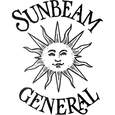Nothing ever moved so fast in an effort to stay still. That’s what I think when I see a hummingbird hovering in the air with its bill poking into a long, tubular flower. Then my mind drifts off to thoughts about the miraculous qualities of these feathered marvels – many of which are clothed in hues more vibrant than those of the rubies, emeralds, and other splendidly colored gemstones used to describe them.
Ruby-Throated Hummingbirds are, by far, the most common species in the eastern and midwestern states. West of that, there are a handful of hummingbird species collectively referred to as (you might have guessed) Western Hummingbirds. But while these different species may inhabit different regions, they all live their waking hours in bursts of high-speed flight.
The hummingbird’s name comes from the humming sound made by the super-fast movement of its wings. For example, Ruby-Throated Hummingbirds average about 70 wingbeats per second – that’s 4,200 beats per minute -- in normal flight, and like all hummingbirds, they can fly ahead or backwards, move straight up or down, dart from side to side, hover in mid-air, and even fly upside down for short periods.
Now all that movement and speed takes a lot of energy, and hummingbirds get the fuel they need by feeding five or six times per hour. In fact, they may visit over 1,000 flowers each day in order to get enough to eat. They need to feed so often because, along with the insects and spiders they eat, they need to consume half their weight in high-calorie nectar or sugar water daily. Their extremely fast metabolisms demand it and failure to do so could lead to starvation in only a few hours.
One of the most endearing qualities of these little bundles of liveliness is that they are so easy to bring in close enough to study. All it takes is a garden filled with flowers or a feeder filled with sugar water. But there are a few guidelines to follow if you want the local hummingbirds to regularly visit your home.
If you are a gardener, you should plant the kind of flowers hummingbirds like best. Cardinal flowers, bee balm, beardtongue, columbine, honeysuckle, and hostas are a few of these. But almost any plants that have tubular blossoms are sure to generate a visit from any hummingbirds in your area. Especially if those blossoms are red.
Setting out a feeder is an easier way to bring hummingbirds in near enough for close observation. There is an amazing variety of these devices and, according to the U.S. Patent and Trademark Office, there are more on the way. But there are two things to consider when purchasing one, First, does the feeder leak? If it does, you’ll have ants, wasps, and a mess around your feeder. Secondly, is the feeder easy to clean? This is important because if the ports get rusty or clogged or the syrup mixture in the feeder spoils, your feeder won’t attract many birds, and those that do come could become ill.
Once you have your feeder (and have tested it for leaks), it is time to make the sugar-water hummingbirds love to eat. It is quite easy. All you need to do is mix one part granulated sugar with four parts water and stir until the water is clear. I usually use half of a cup of sugar mixed in two cups of warm water. I use warm water because the sugar dissolves much easier in it.
Then, when you have filled the feeder, put it out in a place that is located where it won’t be in direct sunlight throughout the day. This is because too much sun will cause your homemade nectar to spoil more quickly. It is also a good idea to locate your feeder where there are some bushes or trees nearby so the birds will have a place to perch when they aren’t feeding.
Hummingbirds may visit your feeder throughout the day, but they will come more often in the early morning and just before dark. This is because they are just coming out of, or about to go into, a night spent in an extremely deep sleep during which they could not feed.
This sleep, called torpor, is more like hibernation than a normal slumber, and in this state, the birds’ metabolism, heart rate, and breathing are slowed down to a fraction of what they are during the daylight hours. This is done to conserve enough energy to make it through the night without starving – especially during cooler nights.
By the way, hummingbirds are very territorial and closely guard the flowers and feeders they consider to be their own. Of course, other birds try to sneak in and “steal” a quick sip of nectar, but in no time at all, the “home” bird will attack and drive the other bird away. So if you want to have more than one feeder, place them so they are not visible to each other.
Later in the year, as summer turns to autumn, most hummingbirds begin feeding more to gain weight for their annual migration down to the southern parts of the United States, Mexico, or Central America. Many will travel over a thousand miles, and some will even make the 500-mile trip across the Gulf of Mexico without a single stop. So even though your local birds have moved on, leave your feeder out for a few more weeks to provide migrants from areas further north with a much-needed meal.
Sometime in March or April, the Hummingbirds will return to your area, so put your feeder out around this time. You have a good chance that the same bird that visited you last year will be back again to your delight and that of every child in the house.
Hummingbirds are truly remarkable, and the person who can’t find anything interesting about these tiny creatures hasn’t looked very hard. Take a little time to learn more about them, and you are likely to find yourself dazzled by more than just their radiant colors.



